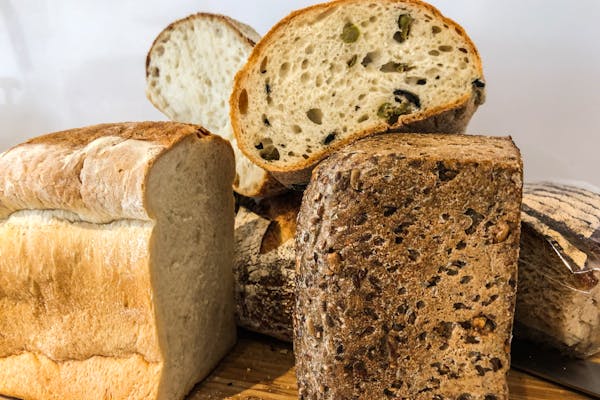Italian style bread crumbs are a pantry staple in many kitchens, adding a flavorful crunch to dishes like chicken cutlets, casseroles, and pasta bakes. But a common question arises: do Italian style bread crumbs include cheese? It explores the answer, diving into the ingredients, variations, and uses of Italian style bread crumbs to provide clarity for home cooks and food enthusiasts. Whether you’re preparing a family dinner or avoiding dairy for dietary reasons, understanding the composition of these bread crumbs is essential.
What Are Italian Style Bread Crumbs?
Italian style bread crumbs are a seasoned blend of ground bread used to coat or top various dishes. Unlike plain bread crumbs, which are simply dried and crumbled bread, Italian style bread crumbs are enhanced with herbs, spices, and sometimes other ingredients to give them a distinct flavor profile. They’re commonly used in Italian-inspired recipes like meatballs, eggplant Parmesan, or breaded chicken.
Key Ingredients in Italian Style Bread Crumbs
The core of Italian style bread crumbs is, of course, bread. This can be made from white, whole wheat, or even gluten-free bread, depending on the recipe or brand. The bread is dried, processed into fine or coarse crumbs, and then mixed with seasonings. Common ingredients include:
-
Dried herbs: Parsley, basil, oregano, thyme, or rosemary.
-
Spices: Garlic powder, onion powder, black pepper, or red chili flakes.
-
Salt: To enhance flavor.
-
Optional extras: Some recipes or store-bought versions may include ingredients like sugar, oil, or preservatives.
The question of cheese, however, depends on the specific recipe or brand, which we’ll explore in detail below.
Do Italian Style Bread Crumbs Include Cheese?
The inclusion of cheese in Italian style bread crumbs varies based on whether you’re using a store-bought product or making them at home. Let’s break it down.
Store-Bought Italian Style Bread Crumbs
Many commercial brands of Italian style bread crumbs, such as Progresso or 4C, include cheese as a standard ingredient to boost flavor. The most common cheese used is Parmesan or Pecorino Romano, both hard, grated cheeses that add a savory, umami taste. These cheeses are finely grated and blended into the crumb mixture, giving dishes like chicken Parmesan or baked casseroles an extra layer of richness.
However, not all store-bought Italian style bread crumbs contain cheese. Some brands, especially those marketed as vegan or dairy-free, omit cheese entirely. For example, Kikkoman Panko Bread Crumbs or Edward and Sons offer vegan-friendly options that rely solely on herbs and spices for flavor. Always check the ingredient list on the packaging to confirm whether cheese is included, as some brands may also use dairy derivatives like whey or casein, which could be problematic for those with dairy allergies or vegan diets.
Homemade Italian Style Bread Crumbs
When making Italian style bread crumbs at home, the decision to include cheese is entirely up to you. Traditional homemade recipes often call for freshly grated Parmesan or Pecorino Romano to mimic the flavor of store-bought versions. For example, a popular recipe might combine:
-
1 cup plain bread crumbs
-
1 tablespoon Italian seasoning (a blend of basil, oregano, and parsley)
-
½ teaspoon salt
-
¼ cup grated Parmesan cheese
However, cheese is not a mandatory ingredient. Many home cooks skip cheese to keep the recipe dairy-free, budget-friendly, or simply to let other flavors shine. You can achieve a robust Italian flavor using herbs like rosemary, sage, or fennel seeds, along with garlic and onion powder, without adding cheese.
Regional and Cultural Variations
In Italian cuisine, bread crumbs (known as pangrattato) are sometimes used as a “poor man’s Parmesan” in regions like Southern Italy. In these cases, toasted bread crumbs are seasoned with herbs and olive oil but typically do not include cheese. However, in Italian-American recipes, cheese is often added to reflect the richer, more indulgent flavors associated with dishes like chicken Parmesan or lasagna.
Why Does Cheese Matter in Italian Style Bread Crumbs?
The presence of cheese in Italian style bread crumbs can impact your cooking in several ways:
Flavor Profile
Cheese adds a salty, nutty, and savory depth to bread crumbs, making them ideal for dishes where a bold flavor is desired. For example, Parmesan-coated bread crumbs can elevate a simple baked chicken breast into a restaurant-quality meal.
Dietary Restrictions
For those with dairy allergies, lactose intolerance, or vegan diets, cheese in bread crumbs can be a dealbreaker. Store-bought versions may contain hidden dairy ingredients, so reading labels is crucial. Homemade bread crumbs offer more control, allowing you to skip cheese or use a vegan alternative like nutritional yeast for a cheesy flavor without dairy.
Shelf Life
Cheese can affect the storage of bread crumbs. Store-bought versions with cheese often contain preservatives to extend shelf life, but homemade bread crumbs with cheese have a shorter shelf life. Without cheese, homemade bread crumbs can last up to a month in the refrigerator or three months in the freezer. With cheese, they’re best used within a week in the fridge or three months in the freezer to avoid spoilage.
How to Make Cheese-Free Italian Style Bread Crumbs
If you prefer to avoid cheese, here’s a simple recipe for homemade Italian style bread crumbs that’s packed with flavor and versatile for any dish.
Ingredients
-
1 cup plain bread crumbs (store-bought or homemade from stale bread)
-
1 tablespoon Italian seasoning (or a mix of dried basil, oregano, and parsley)
-
½ teaspoon garlic powder
-
½ teaspoon onion powder
-
½ teaspoon salt
-
¼ teaspoon black pepper
-
Optional: 1 teaspoon red chili flakes for a spicy kick
Instructions
-
If using homemade bread crumbs, toast stale bread slices in the oven at 300°F for 10-15 minutes until dry. Let cool, then process into crumbs using a food processor or by crushing in a zip-top bag with a rolling pin.
-
In a bowl, mix the bread crumbs with Italian seasoning, garlic powder, onion powder, salt, and pepper.
-
Stir well to ensure even distribution of spices.
-
Store in an airtight container at room temperature for up to two weeks, in the fridge for up to a month, or in the freezer for up to three months.
This cheese-free recipe is perfect for coating vegetables, topping casseroles, or binding meatballs, and it’s vegan-friendly and budget-conscious.
Uses for Italian Style Bread Crumbs
Italian style bread crumbs, with or without cheese, are incredibly versatile. Here are some popular uses:
-
Coating proteins: Bread chicken, fish, pork, or tofu for a crispy exterior.
-
Topping casseroles: Sprinkle over macaroni and cheese or green bean casserole for a crunchy finish.
-
Binding mixtures: Use in meatballs or meatloaf to hold ingredients together.
-
Pasta topping: Dust over pasta dishes for added texture, as seen in traditional Italian pangrattato.
Tips for Choosing or Making Italian Style Bread Crumbs
-
Check labels: For store-bought bread crumbs, always read the ingredient list to confirm whether cheese or dairy derivatives are included.
-
Customize flavors: Adjust herbs and spices to suit your taste. Add rosemary for a woodsy flavor or fennel seeds for a slight licorice note.
-
Control salt: Cheese adds saltiness, so if omitting it, you may need to increase the salt slightly to balance flavors.
-
Go gluten-free: Use gluten-free bread for a dietary-friendly option.
-
Make it fresh: Homemade bread crumbs taste better and let you avoid preservatives found in some store-bought brands.
Conclusion
Italian style bread crumbs may or may not include cheese, depending on whether you’re using a store-bought brand or a homemade recipe. Many commercial versions, like Progresso, incorporate Parmesan or Pecorino Romano for added flavor, but vegan or dairy-free options exist. When making your own, you can choose to add cheese for richness or skip it for a lighter, dietary-friendly version. By understanding the ingredients and tailoring them to your needs, you can ensure your Italian style bread crumbs enhance your dishes perfectly. Whether you’re coating chicken, topping a casserole, or sprinkling over pasta, these bread crumbs are a versatile addition to any kitchen.






